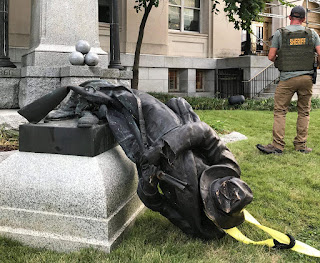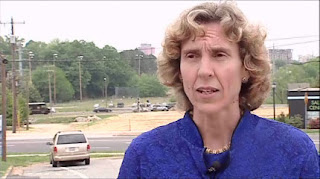
Cuts mean fewer prisons and programs
- As a result of tough-on-crime sentencing laws approved by legislators 15 years ago, North Carolina's Inmate population is booming and will soon outpace the number of prison beds.
Despite this, the state budget signed by Gov. Beverly Perdue this month orders seven small prisons closed, eliminates 972 corrections jobs and cuts programs aimed at keeping juvenile offenders from becoming hardened criminals.
Administrators say the state Department of Correction can safely absorb the cuts in the short-term by increasing the number of inmates at other facilities. But judges, legislators and others with a stake in the criminal justice system worry that the growth, if unchecked, will soon result in prisons so crowded as to be unsafe for inmates or staff.
Last year, the state budgeted more than $1.5 billion for prisons and probation. That's 3.5 times what was spent in 1985, when adjusted for inflation. The number of inmates has more than doubled over the same period, from 17,430 to about 39,000. The system has about 20,000 workers, making it the largest employer among state agencies.
“We can't just keep putting more and more people in prison,” said Sen. Ellie Kinnaird, a Democrat from Carrboro who co-chairs the legislative committee that oversees justice and public safety. “We can't afford it.”
At the heart of the issue is the conflict between strained state resources in the worst economic recession in a generation and the unwillingness of legislators to budge on laws that require criminals to serve more time.
The $74 million in budget cuts and prison closures requires the relocation of about 950 inmates and cuts programs that are popular with inmates and the public, such as family visitation, gyms and the community work crews that provide cheap labor for local governments. Money for the crews that collect litter along the state's highways was also reduced.
The budget also cut $33 million and 122 jobs from the state Department of Juvenile Justice and Delinquency Prevention, eliminating the Governor's One-on-One program, which provides mentors for at-risk youth. Legislators cut two state-funded wilderness camps for children with behavioral problems. Support Our Students, an afterschool program aimed at keeping youngsters out of trouble, is also being discontinued.
Inmates going to other prisons
Many of the positions are vacant, but about 620 employees at the N.C. Department of Correction will lose their jobs if other positions for them can't be found in the system. Inmates at the prisons being closed will be transferred to other facilities. In some cases, cells now used to hold one inmate will be modified to bunk two, while custody classifications at some facilities will be lowered to increase dormitory-style housing.
Jennie Lancaster, chief deputy secretary at the state Department of Correction, said there are limits to how many facilities can be converted to hold more prisoners, especially at the higher security levels.
“We need to run a safe system,” said Lancaster, a former warden who has worked in the state's prisons for 32 years. “We have said to legislators, we consider this a temporary solution. … The state is going to have to either keep adding prison beds or find a way to slow down growth in the prison population.”
A review by the legislature's fiscal research office this year projected that by 2018 the state's prison population will outpace the planned beds by 7,488 inmates. That projected shortfall takes into account 2,268 prison beds scheduled to be added through new construction by 2012 at a budgeted cost of $101 million.
Each maximum-security bed the state adds costs as much as $136,500 in construction, not including the recurring annual expense of feeding and guarding those additional inmates. On average, it costs the state $27,310 a year to keep someone behind bars.
Sentencing guidelines tweaked
Much of the growth in North Carolina's Prison System is driven by two legislative changes made in the mid-1990s as a response to rising crime rates. In 1994, legislators required offenders to spend more time in prison before becoming eligible for parole. Two years later, legislators ended statewide caps on the prison population.
Legislators passed two laws this year sponsored by Kinnaird that will decrease the inmate population in future years by tweaking sentencing guidelines. But a third bill that would have cut the prison terms of many felons by three months and added that time to the length of post-release supervision failed to even come up for a vote.
“The three bills together would have had a tremendous impact, essentially stopping the growth,” Kinnaird said. “But they (legislators) couldn't go along with that.”
Kinnaird said cuts to juvenile programs and funding for the state's mental health division could exacerbate the expected growth in inmate population.
“The Department of Correction is very nervous,” Kinnaird said. “Double-bunking sets up a very dangerous situation. You only have to look at California to see the disaster of having 6,000 inmates in facilities built for 3,000. The increased violence becomes harder and harder to control.”
Often cited as a worst-case scenario, the California prison system is one of the most crowded in the nation, with many of its facilities holding more than double the number of inmates they were designed for. A federal court concluded this month that overcrowding and poor health care is resulting in an avoidable inmate death each week. An Aug. 5 riot and fire at a prison outside Los Angeles left 250 inmates injured and 55 hospitalized.
District Court Judge Marcia Morey of Durham said eliminating programs in North Carolina aimed at helping juvenile offenders and at-risk children is short-sighted, and will potentially cost taxpayers far more down the road.
“I think we're going to pay,” said Morey, who advocates for stronger state services for juvenile offenders. “When you cut community-based services, curfew checks and counseling, you're going to see the results out the back door. It's a recipe for increased juvenile delinquency, which will escalate into adult crime.”
Another issue is that more than a third of those entering prison are ex-offenders who either violated the terms of their probation or were arrested on new charges.
Bill Rowe, a lawyer for the liberal N.C. Justice Center, advocates doing more to help those released from prison to find jobs, housing and vocational training.
“The current system of incarceration and re-incarceration is not working and is eroding the safety of our communities,” Rowe said.
Texas worth imitating?
A coalition of groups supporting reform heard a presentation last month by Jerry Madden, a GOP legislator from Texas who helped revamp that state's corrections system to blunt overpopulation.
Texas is one of nine states in a program run by the national Council of State Governments aimed at lowering prison spending and inmate numbers by investing in programs that improve law enforcement and living conditions in targeted neighborhoods where data show the most crime occurs. Since 2006, Texas has managed to halt growth in its prison population while lowering rates of violent crime.
“I think we came to the conclusion it was smarter and a wiser utilization of our money to invest in programs that can change people's lives, save taxpayers money and at the same time make the community safer,” Madden said Friday.
N.C. Department of Correction administrators and some legislators say they're interested in instituting similar initiatives. The new budget allocates $100,000 for studying programs within the state and across the nation that have reduced the numbers of people going to prison.
But reducing sentence lengths for criminals is likely to be a tough sell at the legislature.
You can't just let a lot of folks out
Sen. Phil Berger, a Republican from Eden, said the state needs to spend whatever it takes to build enough prisons to keep up with the number of inmates entering the system.
“There is recognition, even amongst Democrats, that you can't just let a lot of folks out of prison,” said Berger, the state Senate's GOP leader. “Many of those people are in prison for a reason, and when they get out early or you reduce sentences, we see examples of folks creating havoc once they're released.”
Kinnaird said she is hopeful a bipartisan solution can be found before overpopulation becomes a crisis.
“If we can convince a conservative Republican from Texas there is a different way to go, I think we have a very good chance of explaining to people here that we're approaching this all wrong,” Kinnaird said. “We can't keep doing the same thing and expect different results.”
Feds consider sites in N.C., Md. for new prison
Winton, N.C. — The Federal Bureau of Prisons is considering building a new privately owned and operated facility in eastern North Carolina to keep up with demand for bed space.
Officials are looking at putting the facility for about 1,380 low-security prisoners from the Washington, D.C., area in Winton, a small town along the Chowan River in Hertford County.
The other site being considered is in Princess Anne, along Maryland's Eastern Shore.
View Larger Map
Sources: Charlotte Observer, Newsobserver, WRAL, US Federal Bureau of Prisons, Federal Office of Juvenile Justice and Delinquency Prevention




































































.jpg)























No comments:
Post a Comment